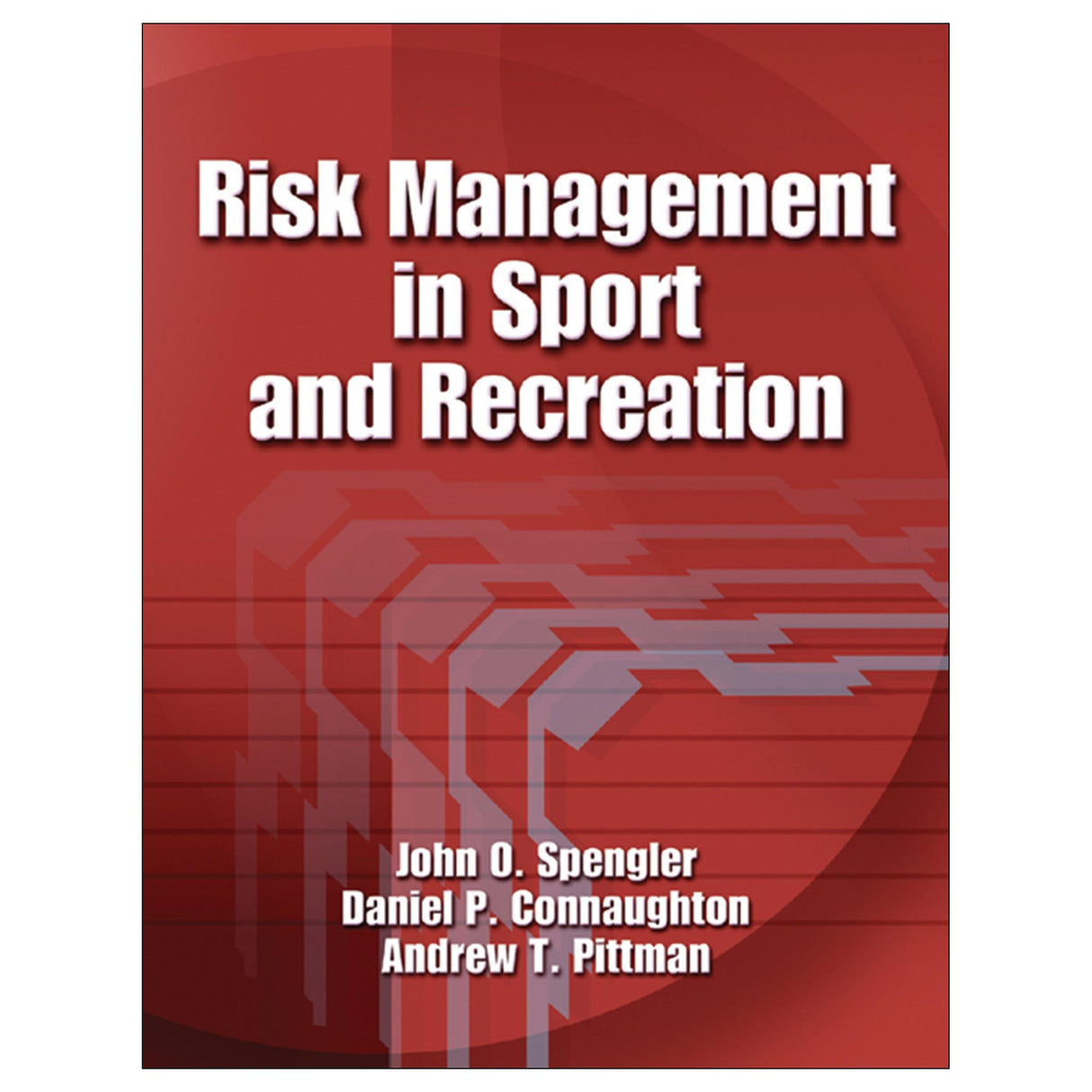Risk Management in Sport and Recreation
$39.00 CAD
Risk Management in Sport and Recreation is a comprehensive resource for those charged with the responsibility of providing for the safety of participants and spectators in a sport or recreation setting. It covers a range of safety issues, including lightning, heat illness, aquatics, playground safety, drug testing, and medical emergency action plans. Readers receive clear and detailed explanations of issues to consider before making decisions on risk management.
Risk Management in Sport and Recreation is designed to provide a foundation for approaching key issues in safety and risk management. It shows readers how to evaluate and analyze various safety issues and apply the underlying concepts to a variety of situations. The following are unique features of the text:
-A safety guidelines finder lists Web sites of accessible standards, guidelines, and recommendations from leading organizations.
-Chapter objectives and pullout boxes of key points and key statistics stress the importance of the topic under discussion.
-Threshold issues in each chapter highlight important factors to consider when making decisions on risk management.
-Real-world applications at the end of each chapter present scenarios involving the potential for harm, and readers must make a decision on how to address the issues.
-Examples of public service announcements, posters, and other publicly viewed safety information are presented.
-An appendix offers examples of emergency action plans, checklists, and recommendations from organizations such as the National Lightning Safety Institute and university aquatic centers.
-A companion Web site provides links to the Web sites used in the book, as well as updates to guidelines and links that may occur after the book is in print.
The safety guidelines finder gives students and practitioners a single location from which they can easily access important safety information. Organized under land-based or water-based activities, each activity lists guidelines, recommendations, and standards along with the source for that information. Each entry includes Web sites where readers can find the full documents. The text also features sample guidelines and safety checklists from agencies and associations that demonstrate how organizations might plan for risk and communicate safety information. Readers also consider the types of postings and equipment they will need in order to communicate their risk management plans, and they are given real-life situations in which a risk management plan is needed and are prompted to consider why and how to create a plan for such situations.
The resource will help students and professionals plan for and manage risk. Current and future employees of sport facilities, school athletic programs, parks and recreation programs, youth and aquatic centers, or resorts and golf courses will find that Risk Management in Sport and Recreation provides the tools to assist in making the right decisions to manage risk effectively.
Audience
Text for students in sport law, risk management, and recreation courses. Reference for sport and recreation administrators, managers, and libraries.
Chapter 1. Decision Making and Managing Risk
-Issues Involved in Managing Risk
-Threshold Issue 1: Deciding Whether to Create and Implement a Risk Management Plan
-Threshold Issue 2: Developing a Framework for Managing Risk
-Summary
Chapter 2. Medical Emergency Action Plans
-Guidelines and Recommendations
-Threshold Issue 1: Deciding Whether to Develop and Implement a Medical Emergency Plan
-Threshold Issue 2: Understanding Key Aspects of a Medical Emergency Plan
-Summary
Chapter 3. Protecting Children
-Prevention Strategies for Child Abuse and Neglect
-Threshold Issue 1: Determining Whether to Develop and Implement a Safety Plan to Protect Children
-Threshold Issue 2: Recognizing Key Issues in Protecting Children From Harm by Others
-Summary
Chapter 4. Exertional Heat Illness in Sport and Recreation
-How the Body Handles Heat During Exercise
-Heat Index
-Types of Heat Illnesses
-Guidelines and Recommendations
-Threshold Issue 1: Deciding Whether to Develop and Implement a Heat Illness Plan
-Threshold Issue 2: Recognizing Key Issues in Developing a Heat Illness Plan
-Summary
Chapter 5. Lightning Safety
-Importance of Lightning Safety
-Guidelines and Recommendations
-Threshold Issue 1: Deciding Whether to Develop and Implement a Lightning Safety Plan
-Threshold Issue 2: Including Necessary Components in a Lightning Safety Plan
-Summary
Chapter 6. Bloodborne Pathogens
-Definition of Bloodborne Pathogens
-Threshold Issue 1: Understanding Compliance Issues Relevant to OSHA's Bloodborne Pathogens Standard
-Threshold Issue 2: Understanding Key Aspects of the OSHA's Bloodborne Pathogens Standard
-Summary
Chapter 7. Sudden Cardiac Arrest and the Use of Automated External Defibrillators
-What Is an AED?
-Guidelines and Recommendations
-Threshold Issue 1: Understanding Issues Relevant to the Purchase and Use of AEDs
-Threshold Issue 2: Understanding What to Consider When Using AEDs
-Summary
Chapter 8. Drug Testing
-Threshold Issue 1: Understanding the Legality of Developing and Implementing a Drug Testing Plan
-Threshold Issue 2: Recognizing Effective Components of a Drug Testing Plan
-Summary
Chapter 9. Equipment, Premises, Instruction, and Supervision
-Threshold Issue 1: Understanding Issues Relevant to Maintaining and Providing Proper Equipment and Premises
-Threshold Issue 2: Recognizing Key Issues in Providing Adequate Instruction and Supervision
-Summary
Chapter 10. Playground Safety
-Playground Injuries
-Guidelines and Recommendations
-Threshold Issue 1: Deciding Whether to Comply With CPSC and ASTM Guidelines and Standards
-Threshold Issue 2: Knowing the Key Issues of the CPSC and ASTM Guidelines and Standards
-Summary
Chapter 11. Aquatic Safety
-Types of Aquatic Incidents
-Guidelines and Recommendations
-Threshold Issue 1: Understanding Compiance Issues Relevant to Local, State, and Federal Laws and Codes
-Threshold Issue 2: Recognizing the Key Issues in Aquatic Program Safety
-Summary
Appendix A. Additional Information for Sport and Recreation Managers
Appendix B. Safety Guidelines Finder





